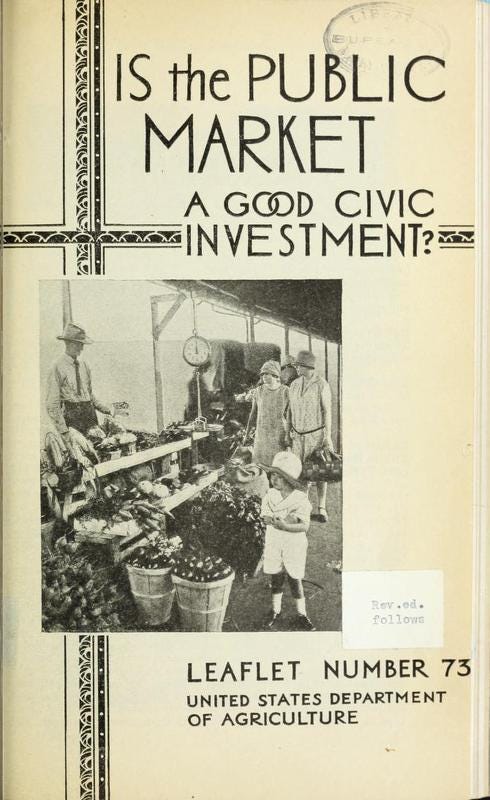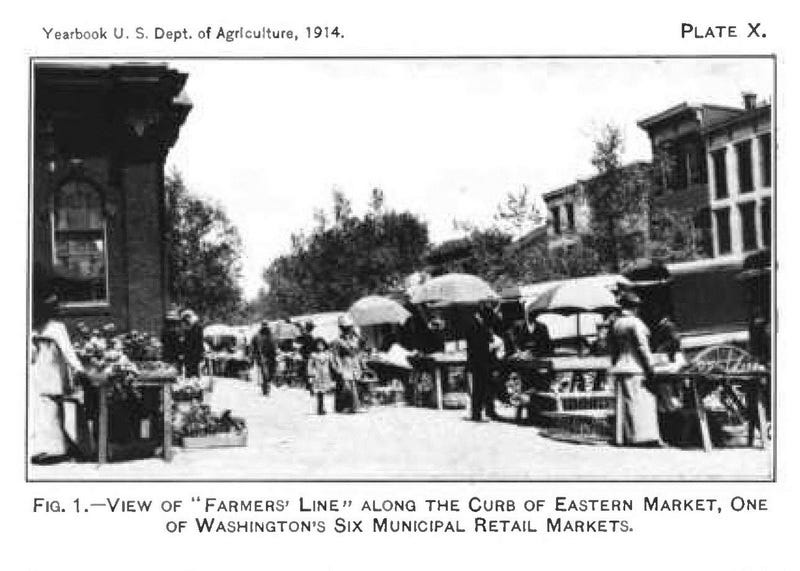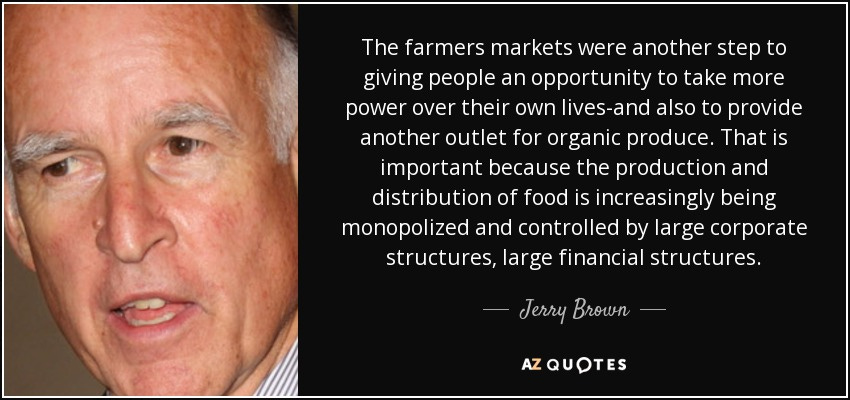WOOHOO IT’S LAUNCH DAY!!! You can now access my Farmer’s Market candle here. Thank you to Mala for making this possible and for also featuring me in this week’s Monday Muse.
Farmer’s Market 101
I love asking people what their farmer’s market smells like because everyone’s answer is so distinct. This smell varies by region, season, weather and this candle is exactly what I think of when I think of my childhood market. Taste can be categorized by salty, sweet, acid, bitter and umami whereas flavor also includes color, texture, and most importantly here memory and aroma. That is why the smell of a nostalgic experience can be so powerful in future bites.
In the spirit of Farmer’s Market appreciation, I wanted to share with you the brief history of these gathering spots.
An Unexpected Deep Dive
The first record of a Farmer’s Market dates from over 5000 years ago in Egypt along the Nile River. How romantic is that visual? Once I learned this fact, I simply had to dig deeper and know more. My notes app became overrun by random historical farmer’s market fun facts (try saying that fast) so naturally, I decided to share these all with you here. This is why I LOVE Substack… my unplanned history investigations see the light of day and don’t live hidden in that little yellow application. Anyways, back to the Nile River.
Alongside this river, merchants were able to trade their goods to travelers passing through as well as locals. There was no concept of money in Ancient Egypt, so all exchanges were made based on a barter system. Their farmer’s market, however, began the practice of going somewhere to obtain goods rather than relying on your own family’s supply. In this Ancient Egyptian outdoor marketplace, it was common to find items such as barley, flax to make linen, cattle, goats, fruit, vegetables… the list goes on! Further, there were not only farmers but also craftsmen so as a shopper (or trader I guess) you would also be able to trade for pottery, sandals, furniture and more.
The Spread of the Farmer’s Market
While this is rarely touched upon, a farmer’s market is also crucial for human interaction. They are a fantastic way to converse with others and make the world feel a bit less lonely. By sharing words, you share ideas and customs which can spread across borders.
This business model was established in ancient times and quickly became the primary source of foods for new villages, towns and communities popping up. With the invention of currency, these markets took the shape of the ones we know and love today. One of my favorites, Le Marché des Enfants Rouges in Paris has been around since 1615!
The Americas
I have found many more written records about American farmer’s markets than those elsewhere. I assume this is because America is so new that there was a record of every single thing that went on from the moment the colonizers arrived. Further, my Western language skills don’t allow me to read older documents from distinct parts of the non-European world. So while there may be documentation, I’m only going to focus on the Western world from this point on in this deep dive.
Evidently, by the time settlers arrived, Native Americans had already been trading produce and goods with each other such as corn, clothing, pottery, and more.
While Native Americans traded their goods, the European concept of purchasing local goods did not exist until 1634 when Governor John Winthrop introduced a European-style farmer’s market in Boston. By 1662, this open air market had expanded to include a proper wooden building on its premises. In most cities, the farmer’s market became the focal point of urban commerce.
The Farmer’s Market quickly became crucial to urban communities. Once real cities began appearing, its citizens still needed to eat right? But how could they do so without a plot of land? These markets became the primary resource of providing fresh produce, meat, dairy to urban dwellers.
Uh Oh, We’ve Got a Problem... US vs Europe
As more roads were built, transportation improved. This just meant that more goods could be brought into towns easily. Further, refrigeration also meant that extremely local goods were unimportant as goods from further away could be just as tasty and fresh hours later is kept cool.
For the next few hundred years, grocery stores also began emerging throughout major cities which lessened the importance of farmer’s markets. These were still around but there were other options now. If your local vendor didn’t have apples, the grocery store around the corner probably did.

In the leaflet above from 1931, we begin to see the fall of the farmer’s market. Within the text we can read the many reasons why customers may be shifting away from these stalls.
"Buying habits of the local consumers are an important factor. They must be studied to ascertain certain facts: (1) Whether food purchases are made chiefly on credit or for cash; (2) to what extent delivery is demanded; (2) to what extent the residents are willing to take home their own purchases, on foot, on street car or bus, or in the family car; (4) whether the housekeepers or the family buyers consider time and convenience as worth more than small savings and possible greater freshness of product; (5) whether those who expect to buy at the new market are leaders among various groups in the community so that their expenditures are likely to be considerable and their influence likely to bring other purchasers; (6) whether, if the interest is limited chiefly to those of small incomes, the numbers of this group are large enough to insure sufficient trade.” By the 1950s and 60s, the amount of farmer’s markets in the United States had drastically diminished and they were beginning to die out. However, in Riccardo Vecchio’s Paper “European and United States farmers’ markets: similarities, differences and potential developments”, he describes the fascinating fact that in countries such as France and Italy, which place a high priority on food origin and regional specialisation, some farmers’ markets continued to exist, partly due to their mechanisms to identify and promote locally grown foods.” The literal cultural tie to good, seasonal food was so engrained in certain parts of Europe that even with the rise of technology, this did not deter customers from going through further lengths to obtain great product.
The California Peach Drama
I was shocked when I learned about this! Turns out, farmer’s markets were somewhat illegal in California until the 1970s? The state regulators had “outlawed the sale of produce outside of commercial markets” so farmers were unable to sell their goods directly to customers. There was a ton of regulation surrounding proper packaging, blah blah blah boring you know? That’s when peaches came in to save the day.
In the late 70s, there was a giant surplus of the fruit and farmers had no idea what to do with them. Eventually, they gathered and decided to dump all of their peaches on the state capitol lawn… iconic. The governor at the time, Jerry Brown, made an exemption and allowed them to sell produce at a farmer’s market. Welcome to the stage the Gardena Farmers Market, one of the very first farmers markets in Southern California, created because of peaches.
Today
Nowadays, a farmer’s market is often seen as just a hip spot to grab some fresh veggies on the weekend. It is important to remember that business practice is and has been essential for communities for thousands of years! To be able to obtain fresh produce directly from the farmer to the customer is somewhat magical and should be cherished considering how rapidly the world is changing nowadays.
I have never regretted a Farmer’s Market splurge. While my wallet may not always, I’ve never been disappointed by fresh produce grown locally. It also makes me happy to know I am supporting an individual who still practices the art of growing sustainably and smaller scale rather than for the mass-market. Be it a fruit, vegetable, carton of eggs, or a floral bouquet, the little imperfections on each one make me smile when examining them back home. They always look the way they should.
A little financial trick I like is only bringing a £20 note with me so limit my spending… Ignore the way I’m sitting I BEG of you!
So this weekend, I urge your to go support your local economy and small businesses! Even if just with a singular purchase, a small act can create a big wave.
If you’re like me and would like to dive even deeper into farmer’s market history, please see below for further reading:
The Farmers' Market Book: Growing Food, Cultivating Community
European and United States farmers’ markets: similarities, differences and potential developments













This is awesome! I did a farmers market haul yesterday in my town and bought meat there for the first time, i’ve always hesitated because i thought it would be pricey but it was actually reasonable. It’s so fun to eat seasonally and support local. I ordered some candles can’t wait to smell it!